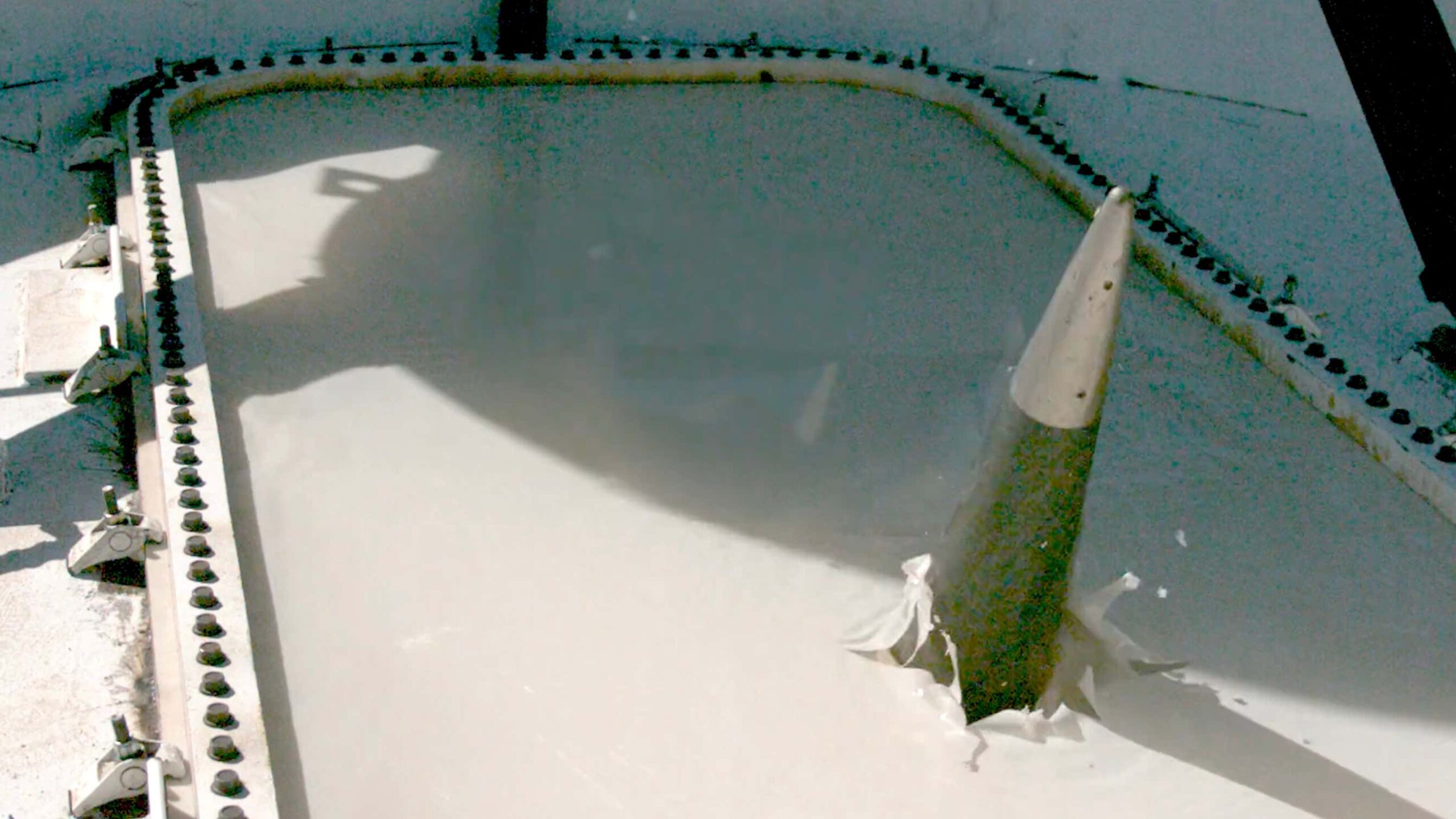The system uses a vacuum chamber within which a rotating arm brings a projectile up to very high speed without any drag penalty, before hurling it into the atmosphere “in less than a millisecond,” according to the company, as a port opens for a fraction of a second to release the projectile. A counterbalance spins in the opposite direction to prevent the system from becoming unbalanced. The vacuum seal stays in place until the projectile breaks through a membrane at the top of the launch tube.
While the concept is fairly simple, the challenge of making it work reliably and repeatedly is a significant one.
[…]
The suborbital accelerator used in the first SpinLaunch test is a one-third scale version of the planned final hardware but is still 300 feet tall, Yaney explains.
The suborbital projectile used in the initial test was around 10 feet long and was accelerated to “many thousands of miles an hour,” using approximately 20 percent of the accelerator’s power capacity.
[…]
The company has future plans to add a rocket motor inside the projectile to provide for orbital flights. In that version, the rocket booster will ignite only after it separates from the projectile/launch vehicle, as you can see in this video. According to previous reports, the projectile will coast, unpowered, for around a minute, before the rocket ignites at an altitude of approximately 200,000 feet.
[…]
The idea behind SpinLaunch may indeed be “audacious and crazy,” but, if it can be fully matured, the technology would appear to offer major advantages over traditional space launch systems. Today, a rocket delivering a payload into orbit will consist primarily of fuel, by mass, reducing the size of the payload that can be carried. SpinLaunch, in contrast, envisages a much smaller rocket that carried a reduced fuel load, but a proportionally larger payload. The company currently forecasts its orbital vehicle delivering a payload of around 400 pounds into orbit.
[…]
Once the orbital vehicle is ready, SpinLaunch says it will have to move away from Spaceport America and seek a coastal space launch facility that will be able to support “dozens of launches per day,” according to Yaney. The rapid tempo of launches without the use of large complex rockets, will, in turn, bring down the costs of putting cargoes into orbit. The company claims that the velocity boost imparted by the accelerator drive results in a four-times reduction in the fuel required to reach orbit and a ten-times reduction in cost.
[…]


